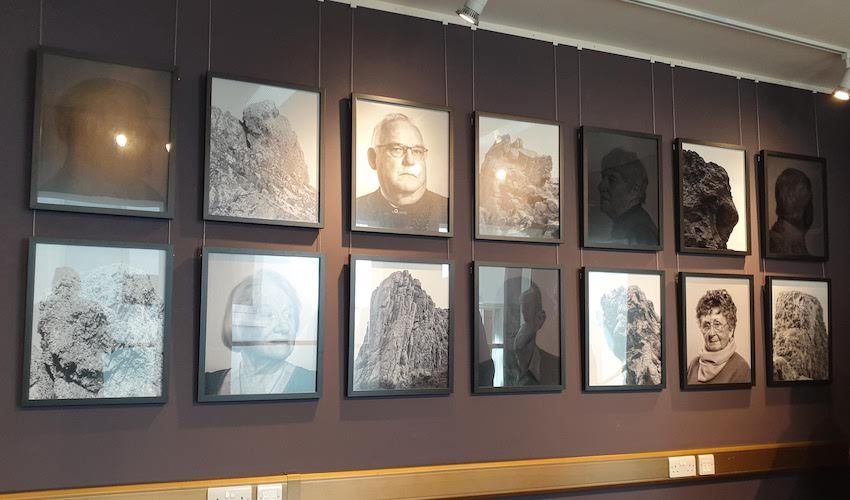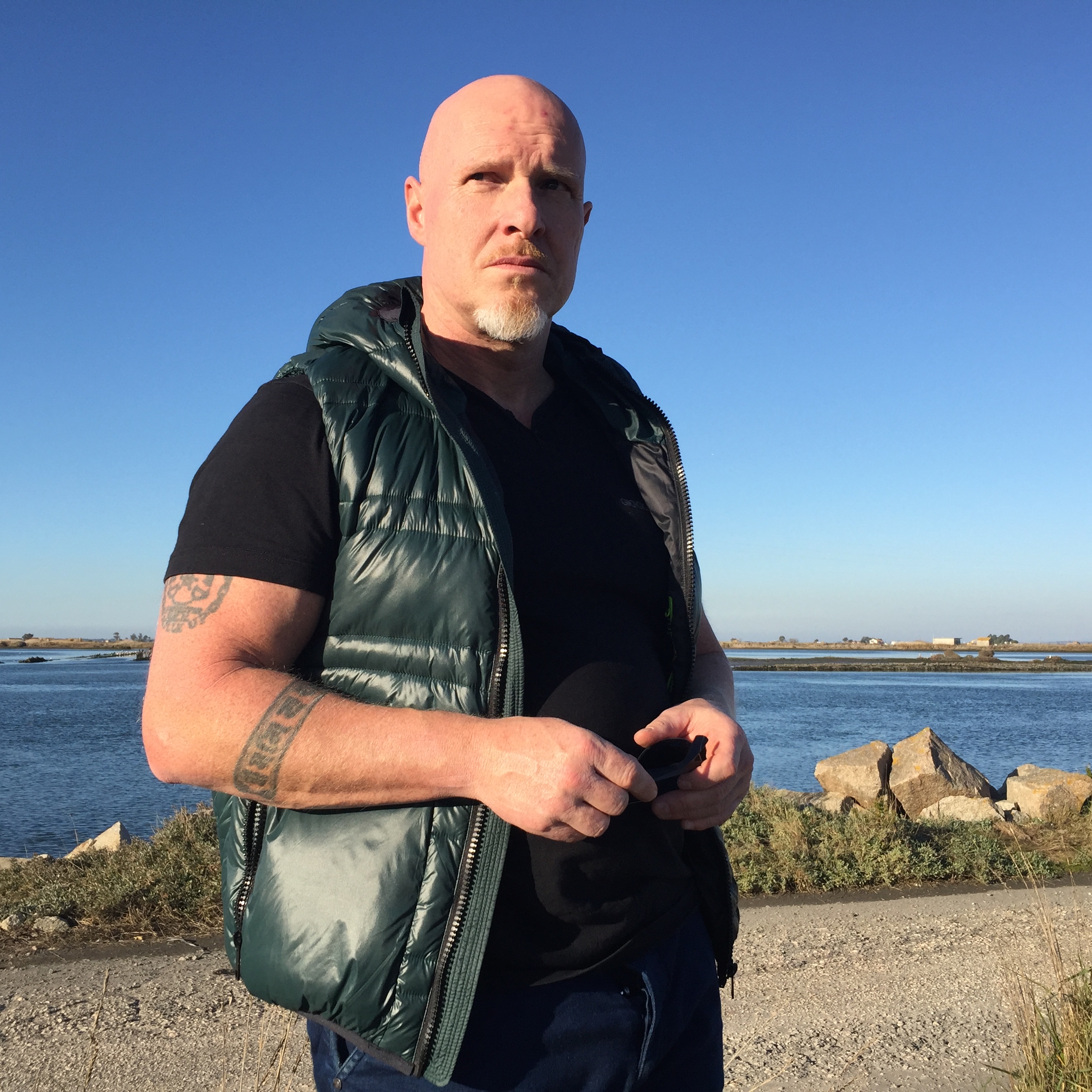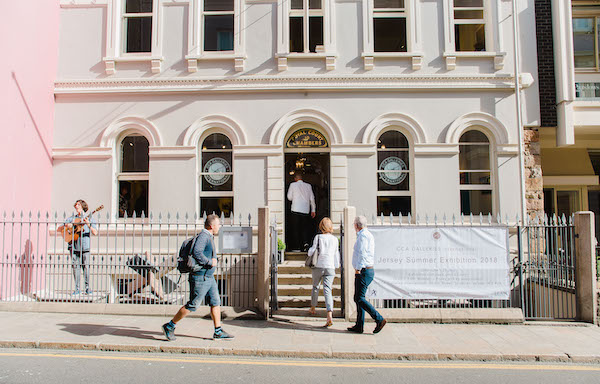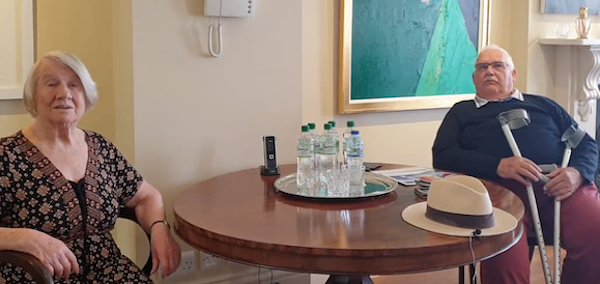

A local photographer has made it his mission to capture the island's last remaining native Jèrriais speakers to give "visibility and recognition" to the guardians of a unique, and sadly fading, language.
In the 2001 census, 113 people islanders named Jèrriais as their main language.
Express went to meet some of them, and the man aiming to keep their language alive through photographs...
Video: "For goodness’ sake, be proud!" one of Jèrriais' last fluent speakers says.
For 'Becque à Barbe' - a project hosted by the Société Jersiaise Photographic Archive - Martin Toft has juxtaposed the portraits of speakers of the island's native tongue with a series of photographs of Jersey rocks that are all designated as Sites of Special Interest (SSIs).
Born in Aarhus - the second largest city of Denmark, founded in the eighth century as a fortified Viking settlement - Martin says he has been interested in Jèrriais for a long time.
"What fascinates me about the linguistic origin of Jèrriais is the influence of Old Norse, which can be found in Jersey’s native tongue, such as the place name L’Etacq - meaning a stack.
"With a growing public interest in protecting this endangered language of Jersey, I want to make a photographic contribution to what many others are already doing through teaching, audio recordings and music."

Pictured: Photographer Martin Toft started working on the project in 2016.
The project started in 2016 when Martin and Gareth Syvret, the former Archivist of the Société Jersiaise Photographic Archive, began to do some research around Jèrriais. The pair looked at the 2001 census, which included two questions about language.
Out of a total of 87,186 residents, 2,874 said they had some understanding of Jèrriais at some level, out of which 113 people described Jèrriais as their main language.
"We were quite interested to find who those 113 people were," Martin explained.
"The generation of Jèrriais speakers are getting older, so we were interested in meeting them and photographing them before they were no longer here, so to speak."

Pictured: 'Becque à Barbe' can be seen at CCA Galleries until 10 June.
With UNESCO declaring 2019 as the International Year of Indigenous Languages, Martin thought it was the perfect time to begin the project. The result is a series of portraits being presented at CCA Galleries until 10 June.
The title of the exhibition literally translates as ‘Beak to Beard'. It is found in phrases like, "Tchaie becque à barbe auve tchitch’un," which means, "I bumped into someone," or, "I suddenly came face to face with someone."
"The idea is that what you see on the wall are essentially portraits of human faces and portraits – I call them portraits – of rock faces," Martin explained. "My conceptual angle is that I think the people who speak Jèrriais as a first language should be classified as 'People of Special Interest' because they have a unique knowledge and understanding of Jersey’s indigenous language.
"They should equally be protected from extinction through encouraging greater visibility and recognition as guardians of a unique language that are essential in understanding the island’s special character."
Pictured: The human faces are juxtaposed with "portraits" of rock faces.
Martin continued: "On a linguistic level, the project is exploring the space between the formal, etymological and vernacular use of Jèrriais. Photography as a medium is mute and the challenge is to photograph, what essentially is a spoken language."
Jèrriais teachers Joan Tapley and Winston Le Brun - the President of L’Assembliée d’Jèrriais - both feature in the exhibition. Both are pleased to see the growing interest Jèrriais has been enjoying in the past few years.
"A lot of people are saying that it would be far better teaching Chinese in schools than Jèrriais and that really is like pepper up my nose," Mr Le Brun said.
"It’s our heritage. Would you have the temerity to tell a Welshman he is not allowed to speak Welsh? I've sometimes got to walk away because I would give a really rude answer when they tell me it’s a waste of time speaking Jèrriais."

Pictured: Joan Tapley and Winston Le Brun featured in the exhibition.
The pair explained that the German occupation and the fact previous generations were not allowed to speak Jèrriais at school have almost killed Jèrriais. Luckily, the tide is now turning and both are happy to share their knowledge with youngsters.
"A lot of the children that we have at the schools, they speak another language but they learn Jèrriais. In fact, there is more interest by people who have come to live here than the traditional Jersey families," Mrs Tapley explained. "We’ve tried and tried to stop the fact that, 'Oh well, they are Jersey families. We don’t care,' but for goodness’ sake be proud!"
"We are very long in the tooth and our nails are getting longer," Mr Le Brun added. "But if we can pass it to the next generation that’s all we can wish for."
Martin Toft will give a talk at the gallery today (24 May) between 13:10 and 13:50.
Comments
Comments on this story express the views of the commentator only, not Bailiwick Publishing. We are unable to guarantee the accuracy of any of those comments.